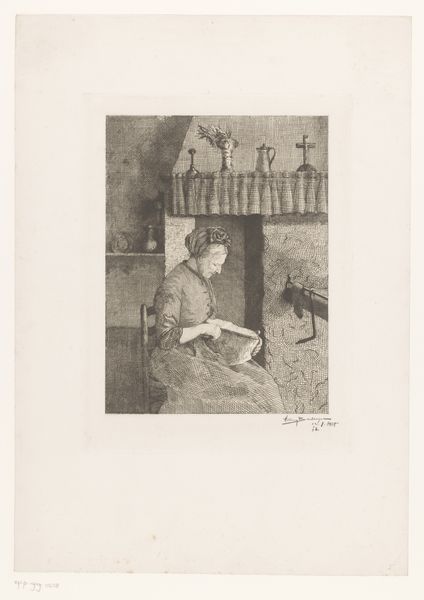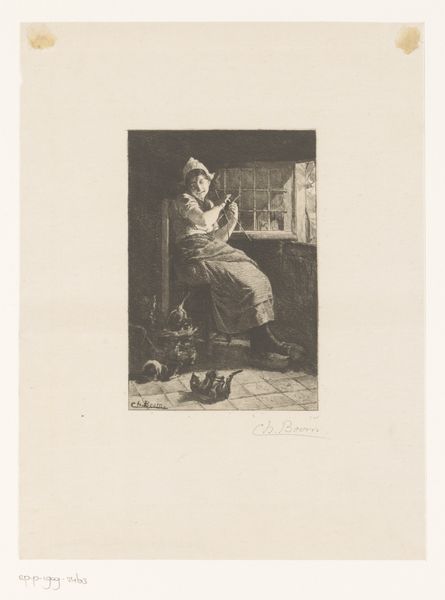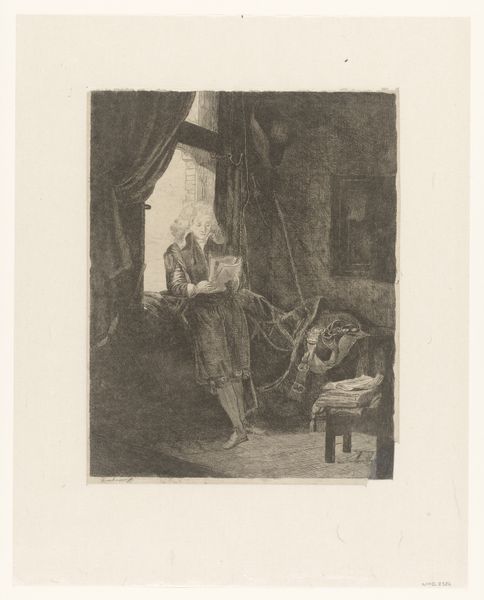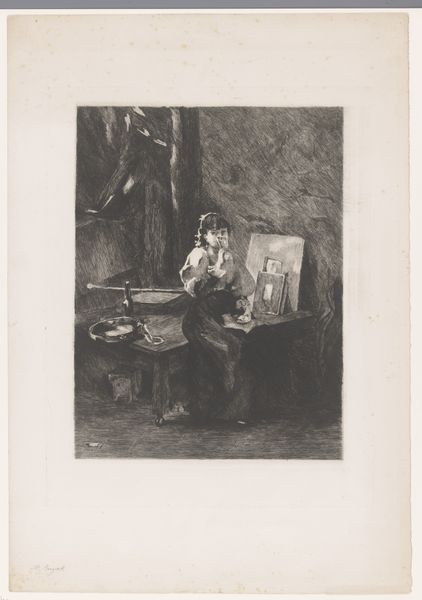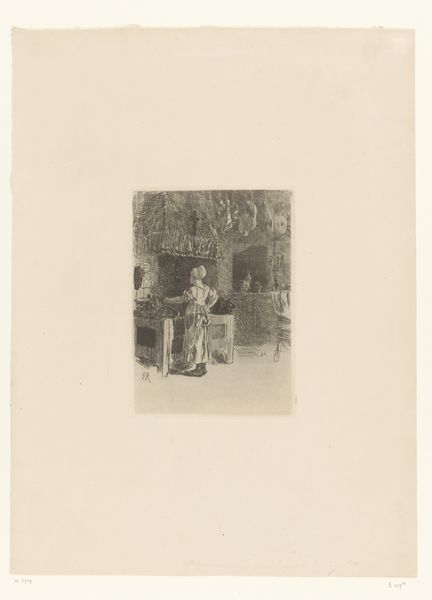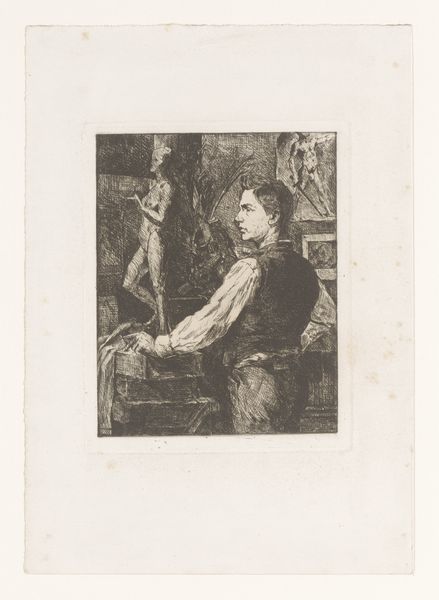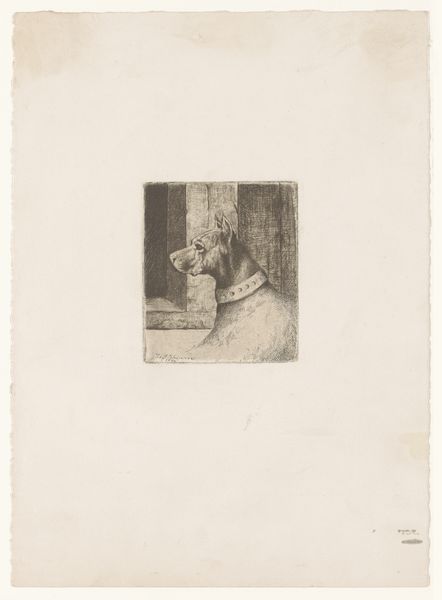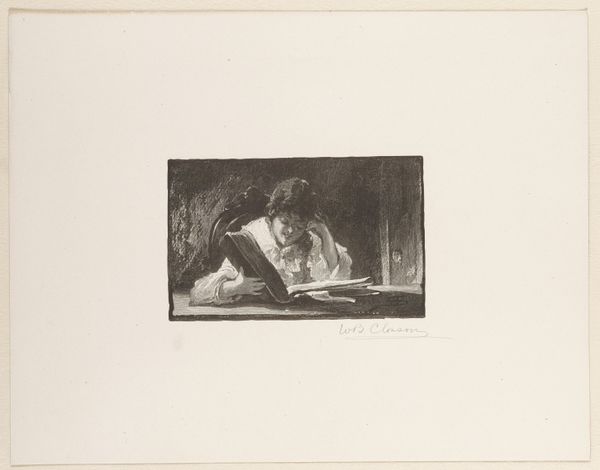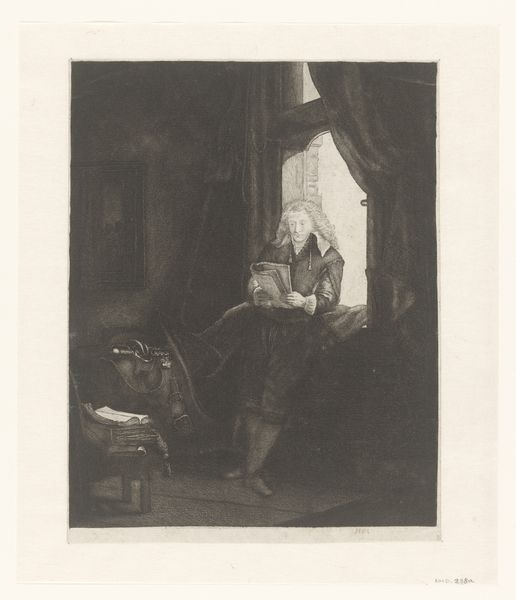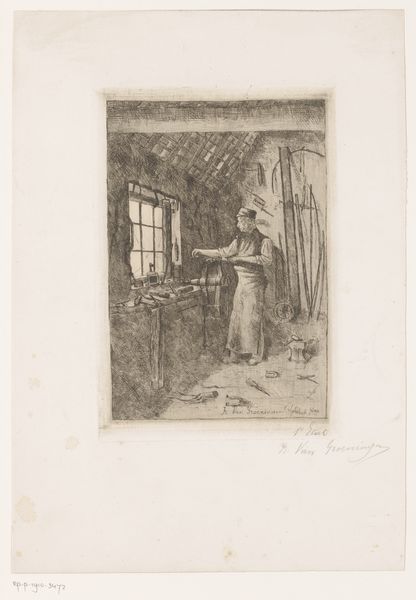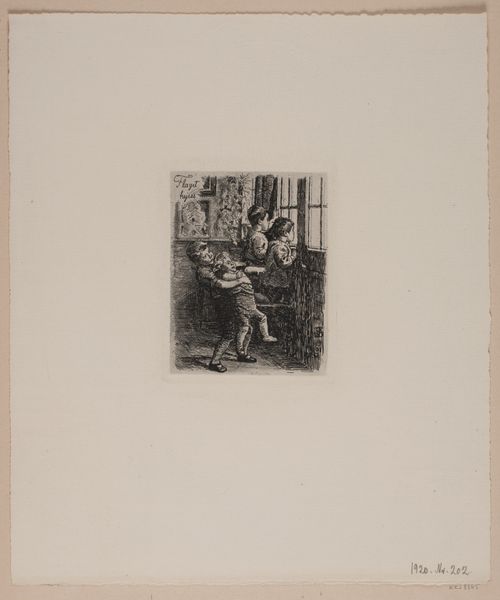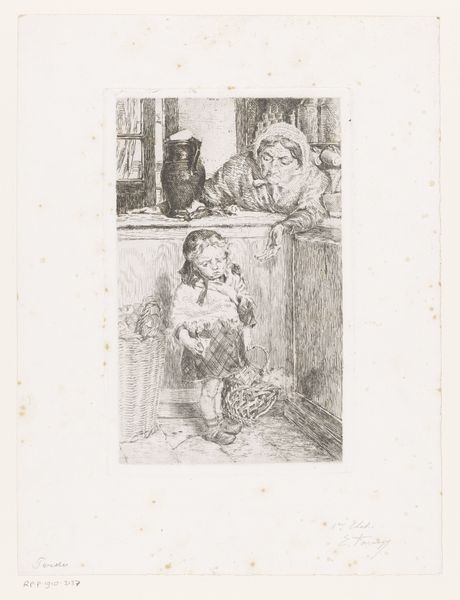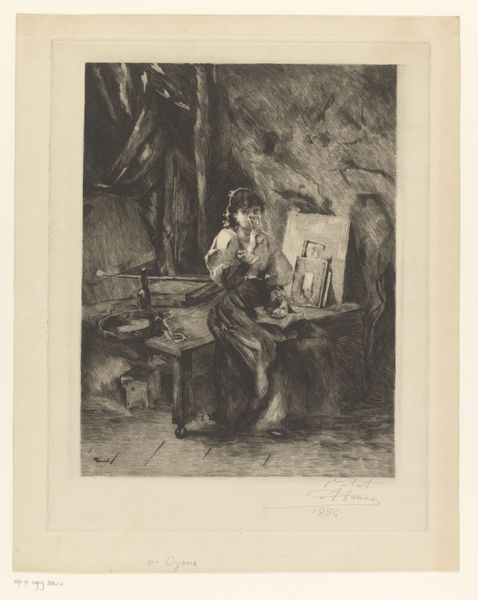
print, etching, paper
#
portrait
#
narrative-art
# print
#
etching
#
paper
#
genre-painting
#
realism
Dimensions: height 309 mm, width 227 mm
Copyright: Rijks Museum: Open Domain
Curator: Herman Boulenger created this etching titled "Oude vrouw snijdt een plak brood af," or "Old Woman Cutting a Slice of Bread," in 1892. Editor: The image feels incredibly intimate, doesn't it? There's such focus on the woman and the simple act of preparing bread. I immediately think about the materiality of the bread itself, the rough grain and its journey from field to table. Curator: Absolutely. It’s part of a broader Realist movement seeking to portray everyday life. Genre painting became increasingly popular, showing ordinary people performing daily tasks. This print offers insight into the domestic life and perhaps social conditions of the period. Editor: I agree. And Boulenger’s choice of etching as a medium is significant here. It allowed for a degree of texture and detail that evokes the worn surfaces of the woman's clothes, the rough texture of the bread, even the gritty reality of the domestic space. Curator: Yes, and it democratized access. Prints allowed images like this to circulate widely, shaping perceptions of working-class life. We also have to think of its display – where would it be hung? Who was likely viewing it? Editor: It’s easy to see the appeal to middle-class audiences perhaps interested in—or perhaps even concerned about—the lives of the working class. Thinking about the production itself...the work involved in both growing the grain and producing this etching… the social relationships underpinning all of that are so evocative. Curator: And notice the details in the background – the shelves with bottles, the dark fireplace. It lends context and speaks volumes about the character's environment and the potential constraints of her existence. Editor: Absolutely. What strikes me most is how he elevated this act, this simple human need. And the process he chose—etching—in itself acknowledges a form of labor often dismissed as craft, not “high art.” It feels intentional, a celebration of labor. Curator: Boulenger clearly had a keen awareness of how representing ordinary moments could have cultural resonance. By circulating such imagery, artists of his time engaged in redefining art's public role. Editor: It's compelling to see how the simple materials and techniques intersect with the bigger cultural picture of labour and the working class in that time. I leave here considering how we depict everyday work, still.
Comments
No comments
Be the first to comment and join the conversation on the ultimate creative platform.
